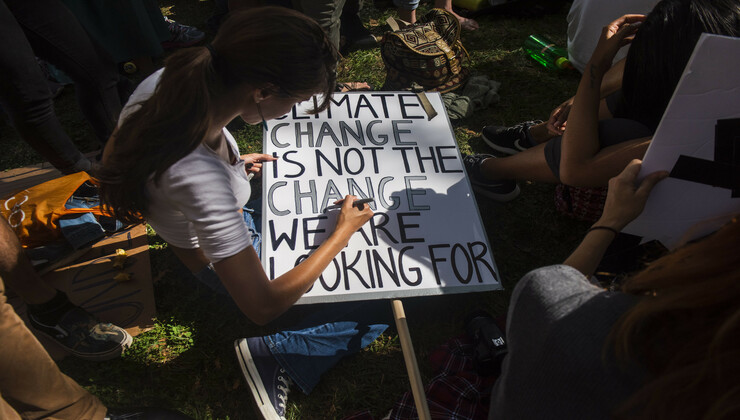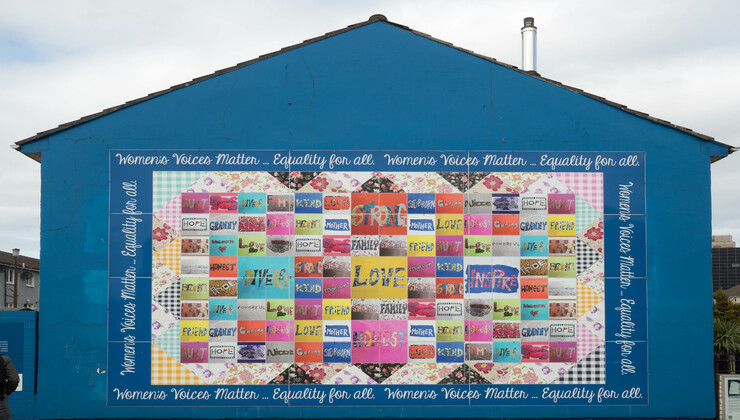To start creating the conditions where human and non-human life can flourish, and where health policies do no harm, we need to carefully consider the many forms that violence takes, especially those that we may not (yet) see. We also need to attend to the ways in which different forms of violence entangle with one another concretely and specifically in different contexts.
Indeed, global health efforts to mitigate particular kinds of violence can cause harm and suffering elsewhere. For example, an increased attention to war-time sexual violence against women, while necessary, may simultaneously silence the experiences of male-survivors of sexual violence, making their needs impossible to attend. Risks like these can be minimised by paying intersectional attention to gender, sexuality, and other axes of difference in global health responses.
Efforts to reduce gendered violence in global health requires a nuanced understanding of the harm that violence produces. This is why global health expertise benefits from feminist peace analysis. In our edited collection Gender, global health and violence: Feminist perspectives on peace and disease we have brought together feminists from various scholarly disciplines, to analyse how gendered violences entangle with differentially gendered realities of global health.
Here gender, of course, is not a synonym for women and girls. It is an organising code in society, where things coded as masculine are taken as the norm and therefore centred and prioritised, whereas things coded as feminine are marginalised, made invisible, and deemed irrelevant. Moreover, gender as an organising code functions to place women, girls, and sexual and gender minorities in positions of subordination, assumed to be passive victims always in need of protection.
Here gender, of course, is not a synonym for women and girls. It is an organising code in society, where things coded as masculine are taken as the norm and therefore centred and prioritised, whereas things coded as feminine are marginalised, made invisible, and deemed irrelevant.
In global health politics this means that the everyday health needs coded as masculine are normalised, whereas the needs that are understood as feminine are either exceptional, marginalised, or both. Furthermore, the health needs that are difficult to code according to this binary order – such as those of sexual minorities and non-binary individuals, or feminised health problems among men – may become silenced altogether. This happens in all societies and is a question of gendered violence in its multiple forms. As described by Élise Féron in our edited volume, as well as in her previous work, such is the case of sexual violence against men — when women are assumed to be the only possible victims, men’s suffering is not fully attended to.
Like many feminist peace researchers and activists, we understand peace not just as the absence of direct, physical, or psychological violence. Peace, in other words, is not just the absence of war, or other forms of armed conflict. Rather, it is about the presence of conditions that allow for the flourishing of human and other-than-human life. And life cannot flourish without a keen attention to health and social care, where the needs of all sexes and genders are met in a nonviolent and non-harmful way.
The authors of our book all share this concern. In each of the chapters, they expose and disentangle multiple gendered violences in global health that are obstacles to people’s flourishing. The contributors to our collection also show how some global health interventions themselves create harm. For instance, the blog written by Néstor Nuño Martínez discusses how global health interventions directed to the waria — a sexual minority in Indonesia — by focusing solely on HIV/AIDS, in fact hamper the achievement of other health needs as well as the needs of HIV-Negative waria.
The book starts with perhaps the form of violence that students of global health as well as students of peace are most attuned with, structural violence. This form of violence is embedded in structures of society and causes avoidable health and life expectancy differentials among people. For instance, if a person dies of COVID-19 today, when vaccines could be widely available, there is violence involved, since without universal access to vaccines the potential of keeping the person alive is not realised. If the reason for this death is that one or more persons decided to withhold the vaccines on purpose, the violence is direct. If the medication is not available due to poverty, discriminatory laws, structural racism, or other systemic factors – including intellectual property rights that hinder global vaccine access – the violence is structural. Sometimes, it is both.
There may also be other forms of violence involved, many of which are gendered, and racialised. There may, for instance, be epistemic violence. This form of violence is produced by particular epistemic orders – such as the biomedical discourse in Global Health – where only certain kinds of gendered pain and suffering make sense, and the pain of others is made incomprehensible and unspeakable, and thereby potentially untreatable. In the book, we borrow the term from Gayatri Spivak’s work on subalternity, to highlight how in mainstream discourses of global health the feminised and racialised voices of the Other are silenced and muted as voices of the irrational.
In each of the chapters, different conceptions of violence are used as analytical tools. The authors uncover gendered violences in global health, discussing how violence and justice entangle with one another in a range of empirical contexts. In the other blogs of this series, written by Néstor Nuño Martínez, Maria Tanyag, and Debra L. DeLaet, Shannon Golden, and Veronica Laveta, the reader will see a few concrete examples.
The book contains many more: from the structural violence imbued in the lack of breast cancer detection and care in Uganda (Deborah Ikhile, Linda Gibson, and Azrini Wahidin), to entangled histories of violence and peace in HIV politics in South Africa (Elina Oinas), to abortion-related violence in Mexico (Camilla Reuterswärd), to symbolic, structural and epistemic violences in dementia care in the Nordic countries (Dragana Lukić and Ann Therese Lotherington), to conflict-related sexual violence against men (Élise Féron), to domestic violence as a public health issue (Laura Finley). The book concludes with Sophie Harman’s reflections on gendered violence as a paradox of global health.
Each of the chapters follow feminist peace research aims to not only uncover, name and analyse violences, but to do so for the purpose of finding solutions that are just and peaceful – for all genders and sexualities. Indeed, compiling this volume with authors from different scholarly backgrounds reminded us about an important feminist lesson for researching peace: namely, types of violence (physical, structural, epistemic, etc.) never occur in the same way universally, but always in particular gendered contexts, where they entangle with each other and take different forms. The lesson is that one needs to do research (and intervention, when appropriate) in the context, and appreciate the lives and expertise of the people experiencing harm in those contexts.
The lessening of violence and the pursuit of justice in practices of global health require situated knowledges and understandings of violence. Furthermore, where old typologies fail to grasp the gendered experiences of harm, novel conceptualisations of violence that derive from the empirically grounded and embodied everyday are required. For this, critical feminist analysis continues to provide the tools, now and in the future.
The views, thoughts and opinions expressed in this blog post are those of the author(s) only, and do not necessarily reflect LSE’s or those of the LSE Centre for Women, Peace and Security.





